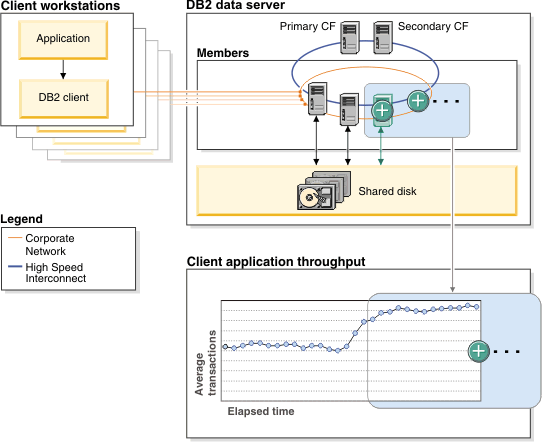The IBM® DB2® pureScale® Feature can scale with near-linear efficiency and high predictability. Adding capacity is as simple as adding new members to the instance.

Why does the DB2 pureScale Feature scale so well? The answer lies in the highly efficient design, which tightly integrates several advanced hardware and software technologies.
For example, the cluster caching facility (CF) handles instance-wide lock management and global caching with great efficiency. Without the equivalent of such a dedicated component to handle locking and caching, the database servers in a cluster must communicate with each other to maintain vital locking and data consistency information. Each time that a database server is added, the amount of communication "chatter" increases, reducing scale-out efficiency.
Even in the maximum supported configuration, your DB2 pureScale environment communicates efficiently. Data pages in the group buffer pool (global cache) are shared between members and the cluster caching facility through Remote Direct Memory Access (RDMA), without requiring any processor time or I/O cycles on members. All operations are performed over the InfiniBand high-speed interconnect and do not require context switching or routing through a slower IP network stack. Round-trip communication times between cluster components are typically measured in the low tens of microseconds. The end result is an instance that is always aware of what data is in flight and where, but without the performance penalty.